- ALL SERVICES
- • Salesforce Consulting Services
- • Managed Services
- • Simplification of Interfaces
- • Data Migration and Processing
- • Architectural Solutions and Scoping
- • Code Review, QA and Support
- • Applications Development
- • Pre-sales and Solutions Consulting
- • Technical Audit and Support
- • Custom Applications Development
- • AI Apps
BLOG
Personalized Marketing Automation: Three Strategies And Examples
• Date: March 2023 •
Estimated reading time: 8 minutes
Estimated reading time: 8 minutes
Subscribe for more useful content
We promise we'll not spam your mailbox!
By submitting you agree to receive a newsletter from Twistellar. You can unsubscribe anytime.
Marketing teams do their best to create an engaging, powerful, and personalized experience for customers from their first visit to the website to making a purchase. And personalization is not an option anymore — it's a necessity.
Since there are plenty of customer touchpoints, all your messages have to hit the target. And in order to communicate in a personalized and successful way, you need to answer the following questions:
- What do we know about the customer?
- What's the right channel and the right message?
- How to send it at the right time without spending excessive time and human resources?
However paradoxical it may sound, automation can help you create a human-like personalized experience, and answer these questions.

Personalized Online Customer Journey
It can help get insights into your customers' needs with the help of AI-powered analytics and reporting.
It transforms each interaction into a personal, human-like dialogue with the help of personalized messages based on the analysis of the previous customer interactions, and it automates repetitive tasks, such as email & ad campaigns, content distribution, and social media planning.
As a result, marketing operations are more optimized, and conversion rates increase.
Of course, to make automation work, you need to have consistent data and a strategy in place. Each strategy is unique to each business, and if you want to discuss how automation can help with your particular case, make sure to contact our marketing consultants.
Today our main goal is to show you some actionable tactics that we've found effective across our projects of Marketing Cloud integration and customization.
We hope that you will be able to add this to your strategy as well. So let's dive in.
Contents:
1. Personalization Examples with Salesforce Marketing Cloud: Email
Scenario 1 — We want to send targeted personalized emails
Even though marketers can sigh sadly when they hear about email, nobody would argue with the fact that it's still one of the most popular channels of communication. 80% of our marketing automation projects are connected to improving an email strategy.
The skepticism about it is usually connected with the fact that emails are typically boring, so they end up in spam and leave you without customers, which is the basic equivalent of an unsubscribe. So how can we draw their attention to our message?

Bad Example of Personalization
If you ever read about personalized emails, it usually means inserting the recipient's name or company name in the content. In Marketing Cloud, it's known as "personalization strings" when you add any known subscribers' attributes into the email content, preheader, or subject line. However commonplace, it is still very effective. But it's just one first step, and there's much more to come up with here.
If you imagine a typical relationship with someone, knowing someone's name just makes you an acquaintance, one of many. However, if you are aware of someone's interests and can offer something based on these interests, it means that you get along well. And here it's good to mention another personalization feature that can help you build trust with your customer: dynamic content.
Dynamic Content
Dynamic content in email lets you build content blocks based on the pre-set rules that you define. It's not limited by name. Here we talk about demographic attributes, such as age, location, or their previous preferences, purchase data, industry, etc.
The best thing here is that you build one email that gets adapted to your audience's preferences. Just consider how much time and effort the team could save!
Imagine that you have an international e-commerce store and you want to send a personalized offer to your customer. You can choose the language of the email based on their location. You can also have different content blocks for similar products based on their previous purchases.
If you sell to individual clients and companies, you can adapt your offer as well. Another example is if you hold events in different countries, you'll have to build just one email, but the content, including the title, place, and language of the event, will be set accordingly in the email.
2. Personalization Examples with Salesforce Marketing Cloud: Landing Pages
Scenario 2 — We want to have adaptive landing pages
Another thing we've found really effective to implement was Interaction Studio, aka Personalization. Think of all your customers' possible touchpoints: website, mobile app, socials, email and ad campaigns, physical store, etc. Every interaction leaves you with important information that contributes to creating a full-fledged customer profile.
Interaction Studio uses cookies to track customer data and their website interactions and match them to the information they have already provided. This way, you can customize interactions, including landing pages that can adapt in real time.

Interaction Studio Example
Let's see some Personalization examples:
- You want to create a personalized journey based on the customers' website interactions. In our case, the company wanted to leverage their ABM strategy, as they had to hit just those accounts that were pre-defined based on size and industry.
The information about the client's previous interactions triggered the landing pages to adapt in real-time while a customer was browsing the website, offering the most suitable services according to his history. After that, an immediate triggered notification was pushed to the sales team and a follow-up message was sent with the automatically configured content based on his latest interactions.
- Another way to leverage Personalization concerns content recommendation — if you have different products, your featured content will adapt to the topic of their interaction, highlighting those events, e-books and posts that will inspire them to take action.
- One more good example to mention here is customer support. When you are able to track the customer history, triggered notifications to call center agents will be helpful to solve cases faster.
3. Personalization Examples with Salesforce Marketing Cloud: Sales Follow-Ups
Scenario 3 — We want to personalize sales follow-ups
Marketing Cloud stores a lot of data about your customers. What you do with this data is up to each team's goal. You can create different journeys based on how your customer will move through the lifecycle with your business and optimize this plan along the way.
These journeys can be triggered by product changes, such as a price reduction or product expiration soon, a segment joining or leaving, etc.
As one of the examples, we want to share our recent case that we've enabled for Ilse Jacobsen. Ilse Jacobsen is a Danish e-commerce company, selling women's clothing, shoes, and a beauty series. As for many retailers, one of the main challenges for Ilse Jacobsen was connected with abandoned carts.

Ilse Jacobsen Hornbæk — Business Process Map
You may know that one of the incredible ways to win back shoppers' attention is to implement abandoned cart journeys. This configuration allows marketers to collect information about their prospects and send dynamic emails based on their actions.
Here are some examples:
- If a client doesn't make a purchase, an automated catch-up message is sent
- If a client doesn't make a purchase within an expected waiting period, a follow-up mail is sent offering a purchase incentive, such as discounts or special offers
- If a client makes a purchase via that email, the data is gathered and processed for further engagement
Such email campaigns allow companies to return customers back to complete their purchases and provide more cross-sell and upselling opportunities.
You can learn more about this case study in our PDF.
To wrap it up:
The list of examples of personalized communication is unlimited. And the effective implementation of these in an automated way helps you save your team's time, and drive customer engagement. Feel free to contact us for more insights about creating an amazing customer experience for your business.
If you have additional questions on how to set it up for your business, feel free to reach out to us for a free consultation
Our deep understanding of Salesforce platform ensures successful handling of projects in any domain
By submitting you agree to receive a newsletter from Twistellar. You can unsubscribe anytime.
Our Articles, News and Salesforce Overviews
Feeling like teaming up with us at Twistellar? We are excited too! Whether you'd like to customize your org, build a bespoke application or integrate a third-party tool, Twistellar is ready to help you.
Get in touch to discuss your Salesforce ideas!





